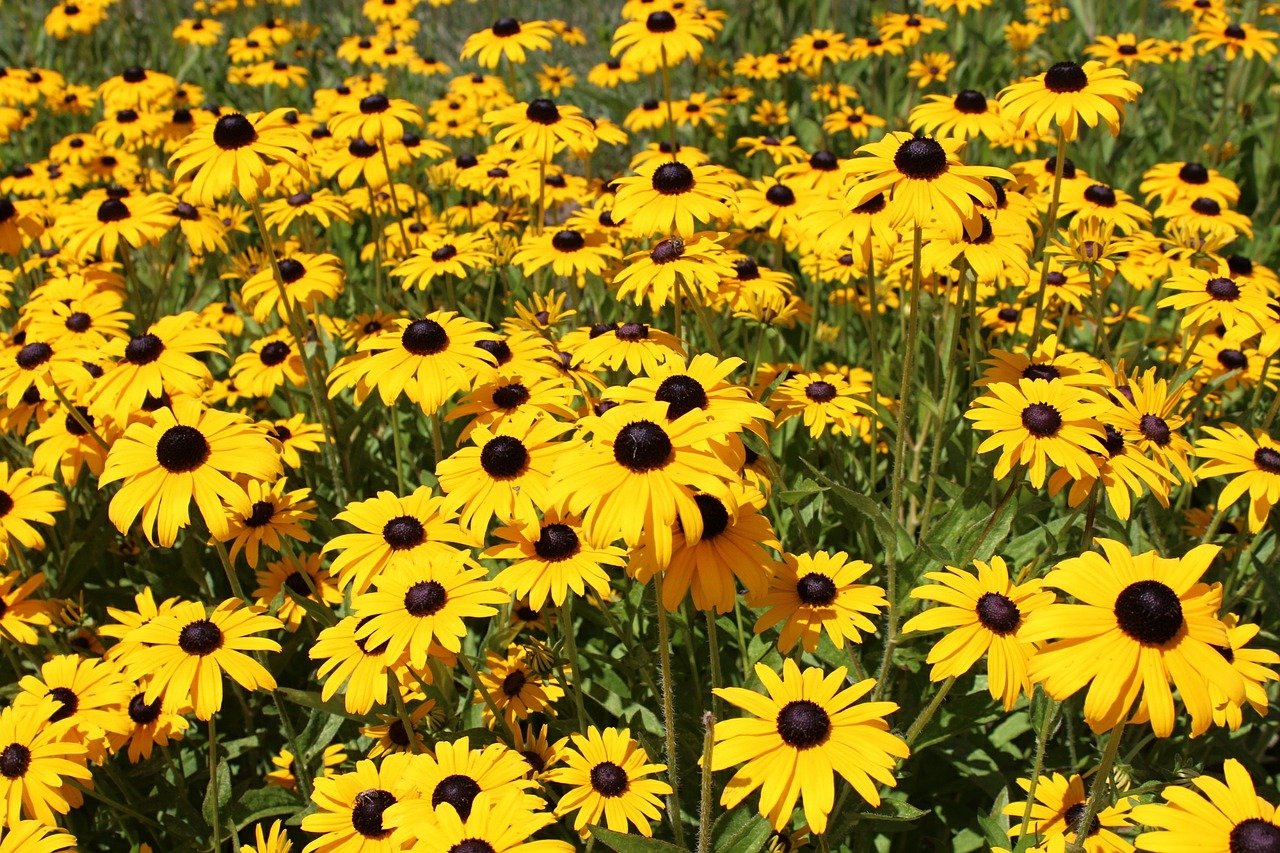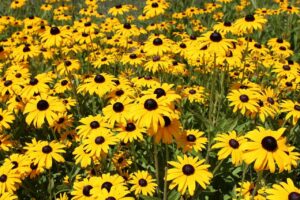The Volunteer Garden
By Thomas Christopher
I used to be meticulous about “deadheading,” pinching or snipping the fading blossoms from my annuals and perennial flowers so that the plants didn’t set seed. This was partly an expression of a desire for neatness. I didn’t like what I perceived as the sloppy look of a bed or border dotted with wilting flowers. But there was also a practical aspect to my compulsion. Annual flowers stop blooming once they have set seed, so deadheading is a way to prolong their season of bloom. And I had been taught that deadheading perennials redirects the energy they would have devoted to seed production back into the growth of the plants and so enhances their vigor. I’ve often heard this justification for deadheading touted, although I’ve never seen any scientific evidence substantiating this claim.
These days, however, I am much more selective in what I deadhead and what I don’t. I don’t plant as many annuals as I used to, and I am skeptical about the supposed benefits to perennials of preventing them from setting seed. What I have become keenly aware of in recent years is the very real benefits that can accrue from letting flowers run to seed.
My bird-watching friends have assured me that there are many types of birds that depend on seeds for food, so when I let my flowers go to seed I am doing my part to sustain populations of sparrow, finches, and others. I’ve also come to admire the look of plants in seed; I’m no longer so floral-centric in my gardening. Setting seed is an intrinsic part of the botanical year, and though seed heads are rarely as spectacular as flowers, they can be quite decorative and are especially important elements of the winter garden. The meadow I planted in the fall of 2019, for instance, is rich in black-eyed Susans (Rudbeckia hirta) blossoms this year. I’m appreciating the sea of yellow flowers, but I’m also looking forward to how the pear-shaped, brown seed heads will look silhouetted against the snow next winter.
As I’ve become less fastidious, I’ve also come to value the role that letting flowers go to seed can play in the renewal and enrichment of my garden. Long ago, when I was temporarily resident in central Texas, I met an elderly, German-American gardener named Walter Kessel, who had a rural yard ablaze with color and who told me he did most of his design with his hoe. He had stocked his cottage-style garden in years past with plants that reseeded enthusiastically. He let the seeds fall where they would and make hosts of seedlings the following spring. He hoed out the seedlings that he didn’t want, or that were struggling, and let the most vigorous grow up to fill his beds. Walter, I suspect, did this out of thrift – the German-descended folk that populate that part of Texas are famously careful with their money – but the resulting display was also quite colorful.
If you want a classier inspiration, consider the “Wild Garden” at Wave Hill, the famous public garden in New York’s Bronx. This display is actually carefully curated, but depends for its charm on an impromptu look. The Wild Garden’s caretakers cultivate this by letting some short-lived perennials such as foxgloves (Digitalis purpurea) and columbines (Aquilegia spp.) seed themselves around. The benefits are two-fold. Firstly, the populations of these flowers continually renew themselves in this way, so that as the old plants decline, new ones come in to replace them. The other benefit, though, is the unpredictability. The location of these flowers continually changes also, lending a perpetual freshness to the display. Here, too, balance and control are maintained by careful editing on the part of the gardeners.
I, too, have got a force of volunteers poking their heads up in the meadow I planted. Despite my best efforts to cleanse the soil of weeds before I planted a mix of wildflower and native grass seeds in the fall of 2020, a scattering of mulleins (Verbascum thapsis) sprouted post planting. As biennials, these are just coming into bloom this summer. I like the visual punctuation their upright spires of flowers provide, and I’m going to let them reseed. They aren’t natives, but with conscientious editing the mulleins will play their part toward making my meadow scenic as well as ecologically sound. Besides, as Walter Kessel would point out, I got them for free, without cost in dollars or labor.

 Thomas Christopher is the co-author of “Garden Revolution” (Timber Press, 2016) and is a volunteer at Berkshire Botanical Garden. berkshirebotanical.org Be-a-Better-Gardener is a community service of Berkshire Botanical Garden, one of the nation’s oldest botanical gardens in Stockbridge, MA. Its mission to provide knowledge of gardening and the environment through 25 display gardens and a diverse range of classes informs and inspires thousands of students and visitors on horticultural topics every year. Thomas Christopher is the co-author of Garden Revolution (Timber press, 2016) and is a volunteer at Berkshire Botanical Garden. berkshirebotanical.org.
Thomas Christopher is the co-author of “Garden Revolution” (Timber Press, 2016) and is a volunteer at Berkshire Botanical Garden. berkshirebotanical.org Be-a-Better-Gardener is a community service of Berkshire Botanical Garden, one of the nation’s oldest botanical gardens in Stockbridge, MA. Its mission to provide knowledge of gardening and the environment through 25 display gardens and a diverse range of classes informs and inspires thousands of students and visitors on horticultural topics every year. Thomas Christopher is the co-author of Garden Revolution (Timber press, 2016) and is a volunteer at Berkshire Botanical Garden. berkshirebotanical.org.


